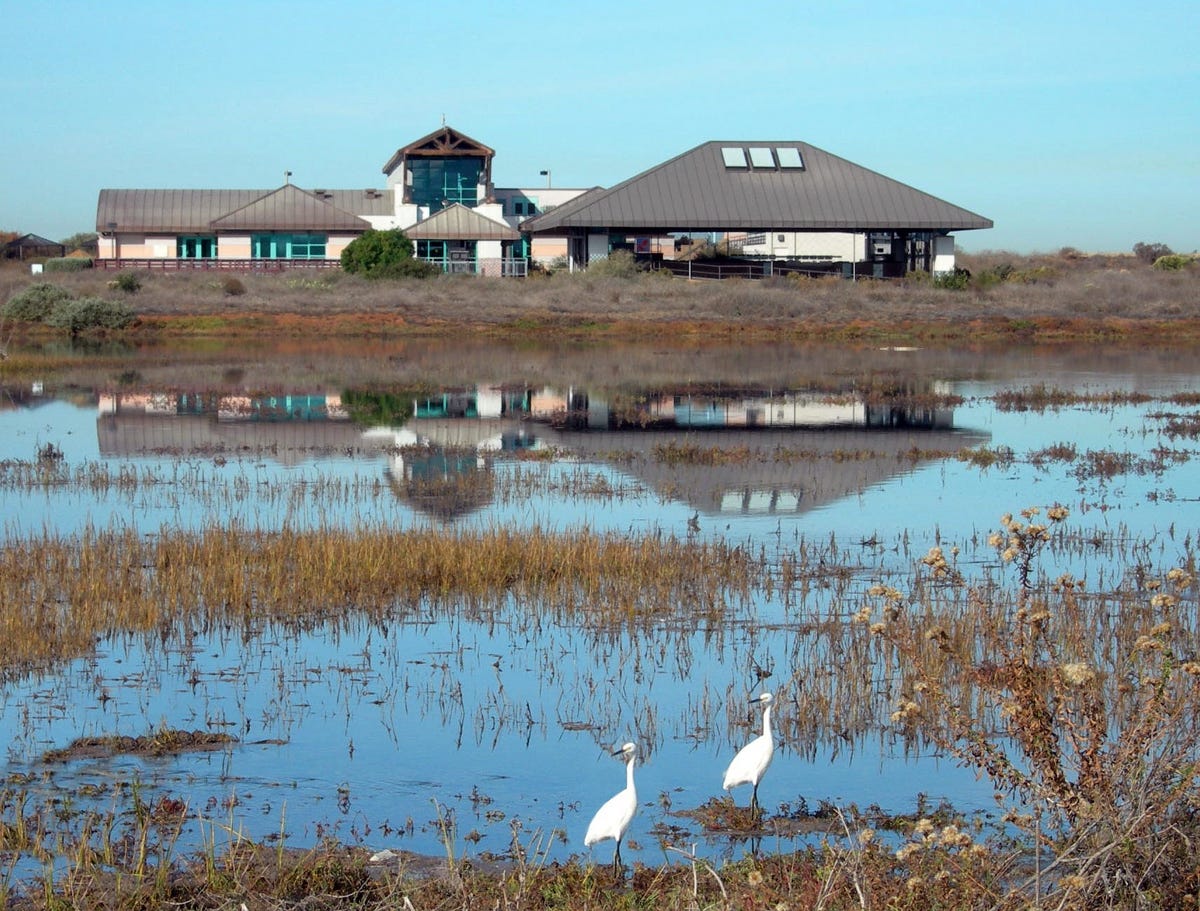Salt marshes, mangroves, and other coastal environments may alleviate climate change
These frequently wet, kinda salty environments sequester an immense amount of carbon.
Big hat tip to Dave Flietner for finding this important research.
The small zoo where I work rests on a tiny island in a wildlife refuge that straddles a coastal salt marsh and the San Diego Bay. To the west are open waters and occasional sailboats. To the east is a flat expanse covered with pickleweed, cordgrass, and other estuarial plants. Depending on the tide, the estuary can go from being slightly muddy to being totally inundated with sea water. This wetland is a federally protected wildlife refuge, where godwits, herons, whimbrels, and even the endangered light-footed Ridgway’s rail nest and feed. This is their home.

Recently, a child at the zoo let go of a balloon. Picked up by the wind, it drifted over and settled in the marsh. I volunteered to retrieve it. As I made my way across the estuary, the ground gave way, and my foot sank into a gooey muck past my shin. The muck was black, deep, dark black, used motor oil black.
What I had stepped into is typical for coastal environments like estuaries, mangroves, and seagrass meadows: deep, dark, rich soils. That dark color, that blackness, indicates a great deal of decomposed organic material, rich in carbon compounds. That carbon, sitting there beneath the marsh plants, is why these coastal environments may prove to be important in fighting global heating.
The science
Recent scientific work is finding that coastal salt marshes, mangroves, and seagrass meadows are immense carbon sinks. Called “blue carbon,” this type of sequestered carbon may help us avert the worst of a warming world.
Carbon in the soil of terrestrial grasslands and forests builds up to a point, then carbon compounds are cycled back into the biosphere and the rest of the environment. The soil in mangroves, salt marshes, and seagrass meadows, on the other hand, accumulates carbon that sinks down and builds up over time. In Portlligat Bay on the northern Mediterranean coast of Spain, and in the mangroves of Belize, carbon rich deposits, like the one I stepped into, are over 30 feet thick. It is also thought that as sea levels rise, these wetland environments will be able to rise and accumulate ever more carbon, a sort of anti-feedback loop of climate change.
It takes a long time to build up that much carbon-rich soil. Scientists have estimated that the thick deposits in Spain and Belize are over 6000 years old. That is another reason these coastal environments are so important. With the concentration of CO2 in the atmosphere now hovering around 415 ppm—more than 30 percent higher than preindustrial concentrations of 280 ppm and higher than in any time in the last 4.5 million years—we will be in this climate change predicament for generations to come. The longer carbon can be sequestered, all the better.
There is another benefit to carbon sinks: in addition to collecting carbon from their own decay, they also sequester carbon from other sources. Wind blows dead leaves from a nearby forest into a mangrove. Dead logs float into an estuary during high tide and get stuck in the quagmire. Scientists estimate that 50 percent of the carbon sequestered in seagrass meadows originates outside of their borders.
Although these environments occupy a much smaller area than forests and grasslands, their sequestration of carbon, acre for acre, exceeds that of their counterparts on terra firma. Altogether, salt marshes, mangroves, and seagrass meadows sequester 36 million tons of carbon a year, nearly comparable to the 58 million tons of carbon sequestered by all temperate forests worldwide.
Need for conservation
Besides sequestering carbon, mangroves, estuaries and seagrass meadows also perform outsized ecological functions. Thousands of species of birds, fish, and mammals rely on estuaries for habitat and food. Because they serve as spawning areas for fish, estuaries are often called "nurseries of the sea." The wildlife refuge where I work is part of a long corridor that supports thousands of birds on their migrations. In addition to the endangered Ridgway’s rail, the reserve is also home to rare and endangered plants, including Palmer’s sea heath and salt marsh bird’s-beak. Similarly, mangroves serve as fish nurseries, and scientists have recently found that mangroves are home to a vast diversity of insect life.
although the need to conserve these environments is apparent, estuaries and other wetlands are vulnerable to a number of human influences, from toxic substances to pathogens. Nutrients that run off from farms and into streams can accumulate in estuaries and choke the life out of them. Humans dredge them to create or expand bays. We also fill them in to make more land for us. In the United States, an estimated 38 percent of our estuaries has been lost. In California, where I live, we may have lost more than 90 percent of our coastal wetlands. Seagrass loss has accelerated over the last several decades, from less than one percent before 1940 to seven percent a year since 1990. Although there are signs that mangrove loss around the world has slowed, they have also suffered from human incursion. The overall loss of all these coastal carbon sink biomes is currently between one and seven percent annually.
Though seagrass meadows, estuaries, and mangroves are known to be a valuable asset in fighting climate change, I haven’t found any renewed push to preserve or restore these environments. If you are aware of any, please let me know by clicking the “Leave a comment” button below.
While finishing up this Substack, I ran across this terrific news itemfrom Scripps Institute of Oceanography in La Jolla that describes the most recent work the institute is doing on blue carbon.
For more environmental science & news follow me on Twitter @EcoScripsit.






A really valuable point, we tend to overlook carbon sinks which aren't trees. Really interesting, thanks.